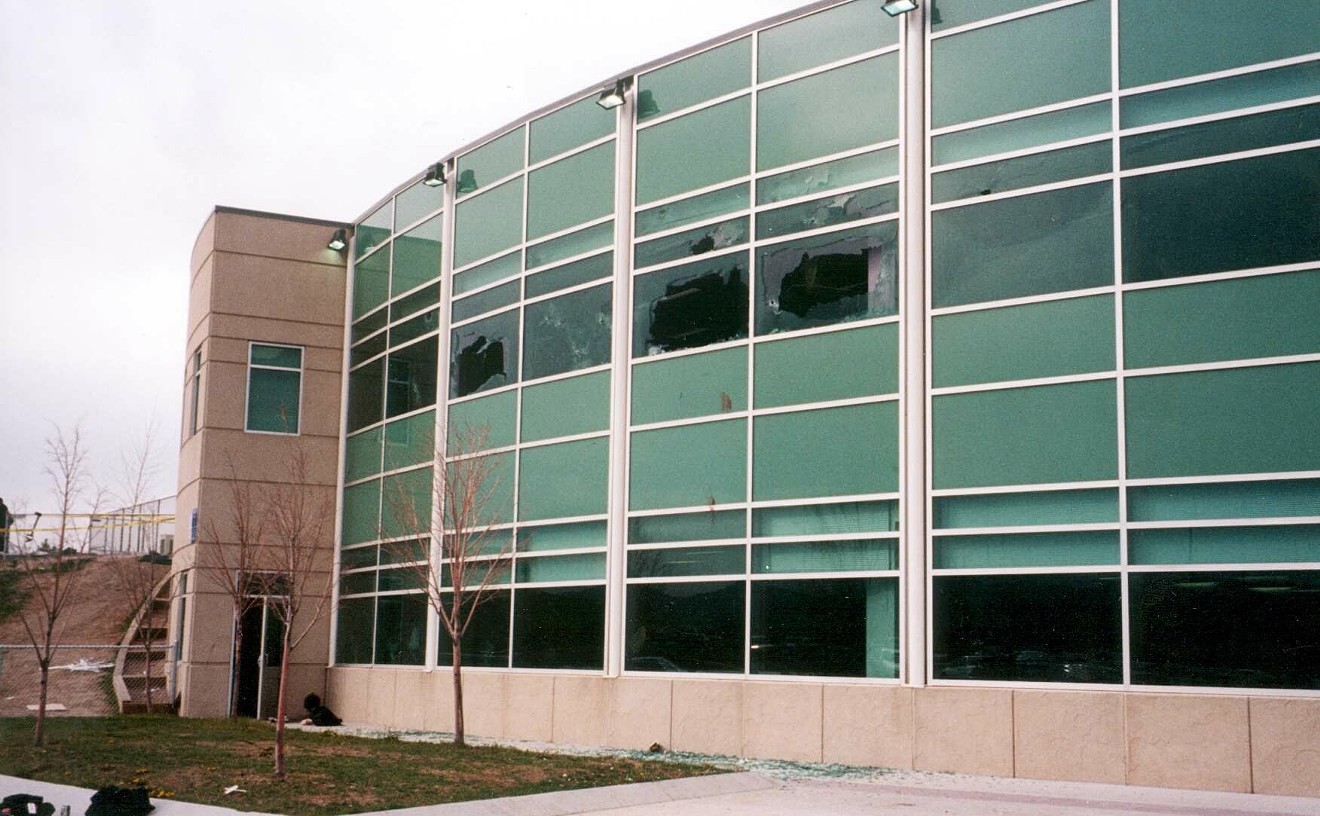Colorado's affordable-housing debate has engulfed the ritzy mountain town of Vail.
A proposal put forth by Vail Resorts to build affordable housing for its employees got the first green light from the Vail Town Council on Tuesday, September 19, while residents and business leaders raised broader concerns over the inability of many workers to live and work in the Vail Valley — amounting to a heated council meeting, according to Councilman Greg Moffet.
The council will make a final decision on October 3 about whether to rezone a parcel of land near Interstate 70 at the eastern mouth of the valley, which would allow the construction of deed-restricted "workforce housing" units specifically for Vail Resorts employees, who typically make less than the area median income.
If rezoned, the 23.3-acre parcel of land, which Vail already owns, would be split into two pieces of land: Seventeen acres would be rezoned as a Natural Area Preservation District, one of the town's most restrictive zoning designations, and about six acres would be set aside for affordable housing.
Living on wages of between $10 and $12 an hour, many Vail Resorts employees — along with workers in all sectors — are forced to find housing in other towns and commute to Vail, according to George Ruther, director of the town’s Community Development Administration.
"Clearly, there is a need for more deed-restricted affordable housing here in the Vail Valley," says Ruther. "And if we are going to see additional housing on this particular piece of land, it's likely a good spot for employee housing to be built rather than free-market units."

If approved, Vail Resorts' affordable-housing development would be one of the first buildings seen when driving into town from the east on I-70.
Town of Vail
That development will offer 200 affordable-housing units, targeting employees making $10 to $12 an hour and who work in Summit County for thirty or more hours a week. Gorman & Co., the developer contracted to build the units, told the Summit Daily that it will charge about $1,500 for a one-bedroom and $1,900 for a two-bedroom apartment.
The two plans are part of Vail Resorts' $30 million commitment to affordable housing — though Summit County officials have questioned whether the resort is actually putting money into the Wintergreen project.
Business leaders including Chris Romer, president of the Vail Valley Partnership, are extremely concerned about the high cost of living in Vail, which lies in Eagle County. He points to a June 2017 VVP report indicating that over 40 percent of unfilled jobs are vacant for over two months — on par with data from the 2007-2008 economic recession.
According to the report, housing is at the center of the problem. “Negative opinions about housing are higher than ever found in the history of conducting the survey,” concludes the report. “Almost 3 out 4 businesses feel that the housing situation negatively impacts their ability to hire and retain employees, and this issue was mentioned frequently when asked about additional resources that are needed."
“It’s not just resort employees; it's the whole valley that is suffering over this,” says Romer. “There is such a need for workforce housing here.”
George Ruther, the town's community development chief, agrees. "It’s well understood that the shortage of employee housing affects everyone," he says.
But groups like the Vail Homeowners Association have been raising environmental concerns about affordable development on the particular 23.3-acre parcel of land.
“It’s a tough site because it has rockfall, potentially avalanche, it's got wildlife habitat, it has upland wetlands, and it potentially has mud flow,” says Jim Lamont, the association’s executive director.
Particularly concerning for Lamont are the potential impacts on a herd of bighorn sheep, which often graze on that land.
“I definitely would not characterize that we are against affordable housing,” he adds. “We’ve just raised wildlife and environmental issues that we think need to be addressed prior to any zoning change.”
Romer says that the environmental concerns are just a diversion from general opposition to affordable-housing development in Vail. He points to a September 2 op-ed in the Vail Daily by resident Alan Danson, who wrote: “Such a complex would amount to another employee-only 'ghetto' that has the potential for noise, traffic and 'youthful activity' at all hours in what is now a school zone and tranquil neighborhood. The town should pursue employee and affordable housing as part of redevelopment within Vail and, more broadly, downvalley.”
“The opponents on this, they are raising environmental concerns,” says Romer, “but the VHA is the spokesman for the not-in-my-backyard people, who have consistently opposed affordable-housing measures since the 1980s.
“It’s not that they are against this plan in particular," he adds. "It is that they are always against the plans."












